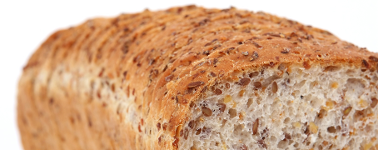Brands
Does A Sandwich Have To Include Bread? Jimmy Dean Says, “Heck No”
 Breakfast sausage and sandwich maker Jimmy Dean (Tyson Foods) is intrigued by America’s growing tendency to eat sandwiches without bread. A third of Americans are swearing off bread in the coming year, and half have eaten breadless sandwiches. To celebrate National Sandwich Day earlier this month, as well as the debut of its Jimmy Dean Delights Egg'wich sandwich, the brand is asking Americans, probably tongue-in-cheek, to sign a petition to change the Merriam-Webster dictionary definition of a sandwich to include those made with – and without – bread. Why must a sandwich, the company asks, be defined by bread? So it’s not too surprising that the new Egg’wich is made with sausage and cheese packed between two egg frittatas rather than bread slices. The sandwich contains 13-14 g of protein per serving with no artificial colors or flavors.[Image Credit: © Tyson Foods, Inc.]
Breakfast sausage and sandwich maker Jimmy Dean (Tyson Foods) is intrigued by America’s growing tendency to eat sandwiches without bread. A third of Americans are swearing off bread in the coming year, and half have eaten breadless sandwiches. To celebrate National Sandwich Day earlier this month, as well as the debut of its Jimmy Dean Delights Egg'wich sandwich, the brand is asking Americans, probably tongue-in-cheek, to sign a petition to change the Merriam-Webster dictionary definition of a sandwich to include those made with – and without – bread. Why must a sandwich, the company asks, be defined by bread? So it’s not too surprising that the new Egg’wich is made with sausage and cheese packed between two egg frittatas rather than bread slices. The sandwich contains 13-14 g of protein per serving with no artificial colors or flavors.[Image Credit: © Tyson Foods, Inc.]
Some Very Popular Breads Feature Candy-Like Levels Of Added Sugar
 Added sugars should account for no more than ten percent of the average daily calorie count – about 2,000 – for Americans. It’s easy to consume those 200 sugar calories, however, if you eat bread made by companies like Martin’s, Dave’s Killer Bread, Vermont Bread, Wonder Bread, the Cheesecake Factory, Udi, Pepperidge Farm, Arnold, and others. Two slices of Martin’s Potato Bread, for example, deliver more sugar (six grams versus 4.7 grams) than a Twizzler. A slice of Dave's Killer Bread’s Raisin' the Roof has six grams of sugar. The Cheesecake Factory's "Famous 'Brown Bread” has about the same amount of sugar as a nibble of its cheesecake. A sandwich made with Freihofer's 100 percent Whole Wheat Bread has the same amount of sugar as a Jolly Rancher. And so on. [Image Credit: © Sornram Srithong]
Added sugars should account for no more than ten percent of the average daily calorie count – about 2,000 – for Americans. It’s easy to consume those 200 sugar calories, however, if you eat bread made by companies like Martin’s, Dave’s Killer Bread, Vermont Bread, Wonder Bread, the Cheesecake Factory, Udi, Pepperidge Farm, Arnold, and others. Two slices of Martin’s Potato Bread, for example, deliver more sugar (six grams versus 4.7 grams) than a Twizzler. A slice of Dave's Killer Bread’s Raisin' the Roof has six grams of sugar. The Cheesecake Factory's "Famous 'Brown Bread” has about the same amount of sugar as a nibble of its cheesecake. A sandwich made with Freihofer's 100 percent Whole Wheat Bread has the same amount of sugar as a Jolly Rancher. And so on. [Image Credit: © Sornram Srithong]
Companies
“Old World” Bread Bakery To Open Retail Shop At New Location In New Orleans
 New Orleans bakery Bellegarde, known for its in-house stone mill and use of organic grains, has stayed out of the limelight for five years, content to supply the city’s restaurants and markets with “Old World” breads. All that is changing, however, as Bellgarde, plans to leave its home in a shabby strip mall for a new location west of the French Quarter. It will have its own retail bakery for the first time, while also expanding the line of baked goods it produces. The location may be changing, but the bakery’s approach will not. The new facility will be a more accessible space to showcase how Bellegarde works. The stone mill turns organic grains into the fresh flour used for dark-crusted, aromatic baguettes, ciabatta, country loaves and other breads that have won the small bakery a wide following in New Orleans. [Image Credit: © Bellegarde Bakery]
New Orleans bakery Bellegarde, known for its in-house stone mill and use of organic grains, has stayed out of the limelight for five years, content to supply the city’s restaurants and markets with “Old World” breads. All that is changing, however, as Bellgarde, plans to leave its home in a shabby strip mall for a new location west of the French Quarter. It will have its own retail bakery for the first time, while also expanding the line of baked goods it produces. The location may be changing, but the bakery’s approach will not. The new facility will be a more accessible space to showcase how Bellegarde works. The stone mill turns organic grains into the fresh flour used for dark-crusted, aromatic baguettes, ciabatta, country loaves and other breads that have won the small bakery a wide following in New Orleans. [Image Credit: © Bellegarde Bakery]
Consumers
Consumer Food Choices Change As Perceptions Of What’s Healthful Change
 Technomic’s 2018 Healthy Eating Consumer Trend Report finds that consumers are increasingly taking on a more personalized, holistic view of health, making food and beverage choices – e.g., natural, organic, high-protein, functional – based on their personal definition of health. But they may still reconsider restaurant orders if they think an item has too many calories. These views have implications for restaurants, especially as some are now required to post calorie counts and consumers increasingly rely on foodservice for meals. Other key findings: 40 percent of consumers say their definition of health has changed over the past two years; 66 percent look for calorie counts on restaurant menus; and 34 percent are likely to order dishes made with vegetables instead of carb-rich items.[Image Credit: © Winsight, LLC.]
Technomic’s 2018 Healthy Eating Consumer Trend Report finds that consumers are increasingly taking on a more personalized, holistic view of health, making food and beverage choices – e.g., natural, organic, high-protein, functional – based on their personal definition of health. But they may still reconsider restaurant orders if they think an item has too many calories. These views have implications for restaurants, especially as some are now required to post calorie counts and consumers increasingly rely on foodservice for meals. Other key findings: 40 percent of consumers say their definition of health has changed over the past two years; 66 percent look for calorie counts on restaurant menus; and 34 percent are likely to order dishes made with vegetables instead of carb-rich items.[Image Credit: © Winsight, LLC.]
Research & Insights
How Europe’s Wheat Farmers Can Plan For Climate Change-Induced Drought
 Climate change in Europe is likely to bring frequent heat waves and drought, both of which will challenge production of wheat and maize, according to scientists at Denmark’s Aarhus University. Drought in particular will cause crops, especially those sewn in spring, to wither and die as they did in this past summer. The researchers wondered which was the bigger problem in the long run for winter wheat and maize: heat or drought. It is important to differentiate because the defense mechanisms of plants against drought are different from those used to protect against heat stress. Wheat and maize under climate change will be most affected by drought, less so by heat. Knowing this will help farmers and plant breeders develop suitable crop varieties and management systems. [Image Credit: © minka2507]
Climate change in Europe is likely to bring frequent heat waves and drought, both of which will challenge production of wheat and maize, according to scientists at Denmark’s Aarhus University. Drought in particular will cause crops, especially those sewn in spring, to wither and die as they did in this past summer. The researchers wondered which was the bigger problem in the long run for winter wheat and maize: heat or drought. It is important to differentiate because the defense mechanisms of plants against drought are different from those used to protect against heat stress. Wheat and maize under climate change will be most affected by drought, less so by heat. Knowing this will help farmers and plant breeders develop suitable crop varieties and management systems. [Image Credit: © minka2507]
Common Farm Insecticides Increase Risk For Neurodevelopment Disorders
 A scientific review of earlier studies has found sufficient evidence that prenatal exposure to widely used insecticides known as organophosphates puts children at risk for neurodevelopmental disorders. Published in the journal PLoS Medicine, the study by public health experts urges governments to ban the chemicals from the food chain. Organophosphates, used to control insects at farms, golf courses, shopping malls, and schools, kill pests by blocking nerve signaling. In addition to recommending that the pesticides be removed from agricultural and non-agricultural uses and products, the researchers urged greater medical and nursing education on organophosphates to improve treatment for and patient education on avoiding exposures.[Image Credit: © Milesl from Pixabay]
A scientific review of earlier studies has found sufficient evidence that prenatal exposure to widely used insecticides known as organophosphates puts children at risk for neurodevelopmental disorders. Published in the journal PLoS Medicine, the study by public health experts urges governments to ban the chemicals from the food chain. Organophosphates, used to control insects at farms, golf courses, shopping malls, and schools, kill pests by blocking nerve signaling. In addition to recommending that the pesticides be removed from agricultural and non-agricultural uses and products, the researchers urged greater medical and nursing education on organophosphates to improve treatment for and patient education on avoiding exposures.[Image Credit: © Milesl from Pixabay]
Copyright 2026 Business360, Inc.

